
Colorado Panorama
The hardwood forests of the eastern states get all the love. People, foreign and domestic, come to see the wonderful fall foliage. And I don’t blame them. In October, 2014 we took a sweep through the upper Midwest to the Adirondacks to see what all the fuss was about. And indeed, the colors are quite impressive.
On the eastern slope of the Rockies, where we live, the dominate fall color is yellow. With a backdrop of snowy peaks; the yellows with a smattering of oranges and reds are lovely. However, a few years ago we started making fall pilgrimages to the western slope of the Rockies and found the colors there to be as stunning as the eastern states. Much different landscapes, but equally as gorgeous.
In this blog post I’m going to share some of our favorite western slope leaf tour roads. Many are off the beaten path and unpaved…but that means not as crowded. In Colorado, don’t wait until mid-October. Start around the end of September. Our higher, dryer climate prompts trees to turn earlier that out east.
We leave Lyons and drive over Trail Ridge Road in Rocky Mountain National Park. After looking for animals, we camp on Stillwater Pass west of Grand Lake. It’s a dirt road with lots of open areas to park. Sadly, in 2020 we had numerous large fires in Colorado. Some of the park and Stillwater area were badly burned.
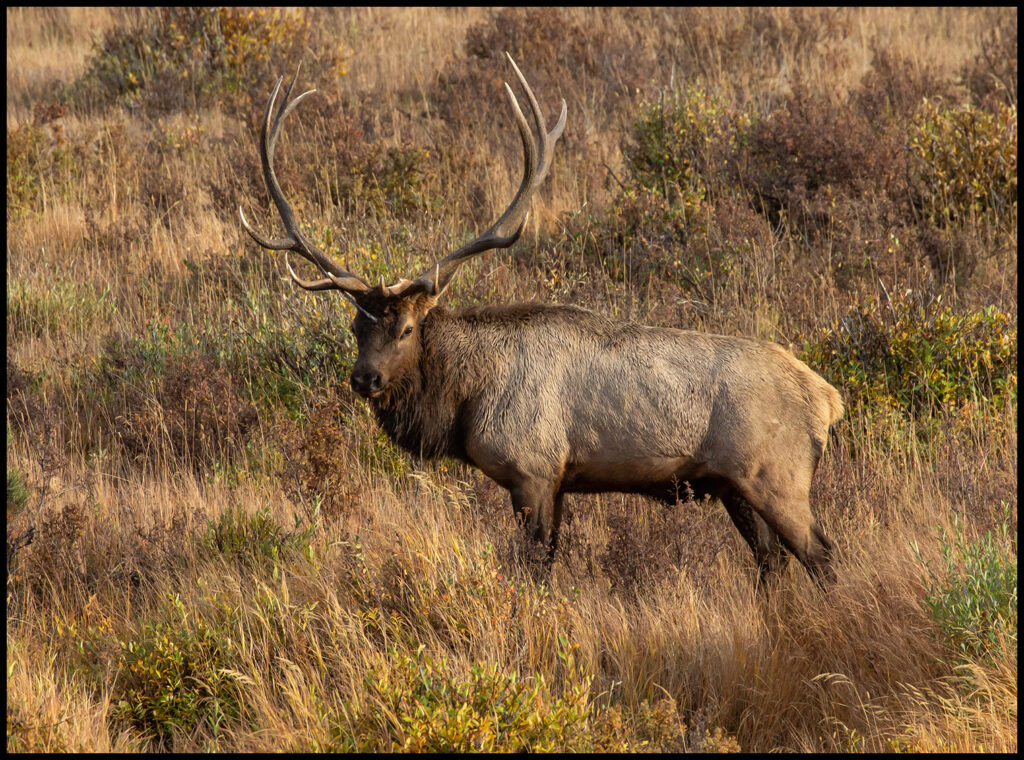
The elk are in rut and the males are rounding up females for their harem. You can hear them bugling from afar.

If you’re lucky you might spot a Bighorn sheep in the high country before they move to lower elevations for winter.
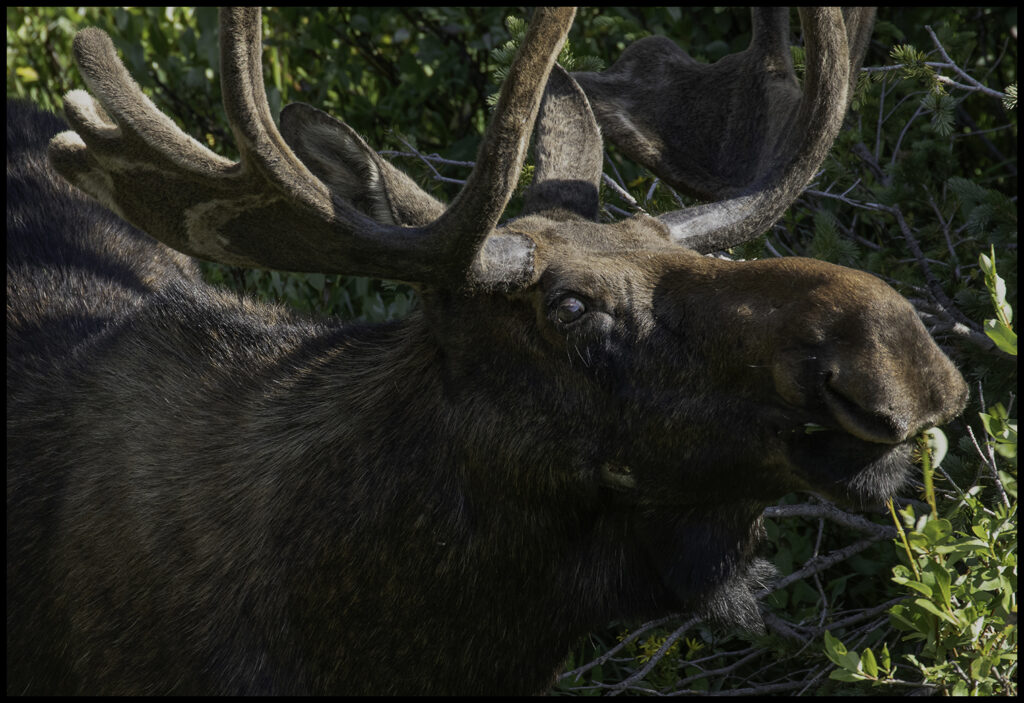
Moose are now seen frequently in the park.
Moose are not endemic to Colorado. They were introduced on the western slope in the ‘70s by the Division of Wildlife, presumably to add another target animal for hunters. There were several additions to the population over a decade, but now they are well established. Many have migrated to the eastern slope and are even occasionally seen in towns close to the plains.

Chickaree or Pine squirrels stash food for the winter in middens. They live strictly in northern forests and are noisy little alarms when they see you in their territories.
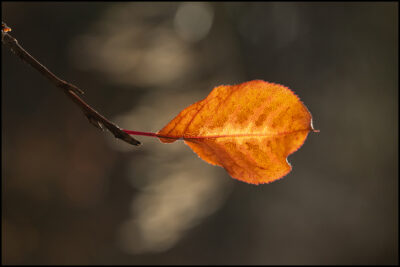
End of summer.
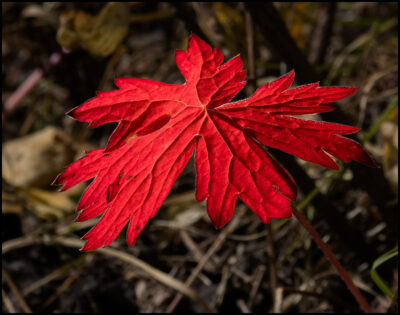
Wild Geranium leaf.
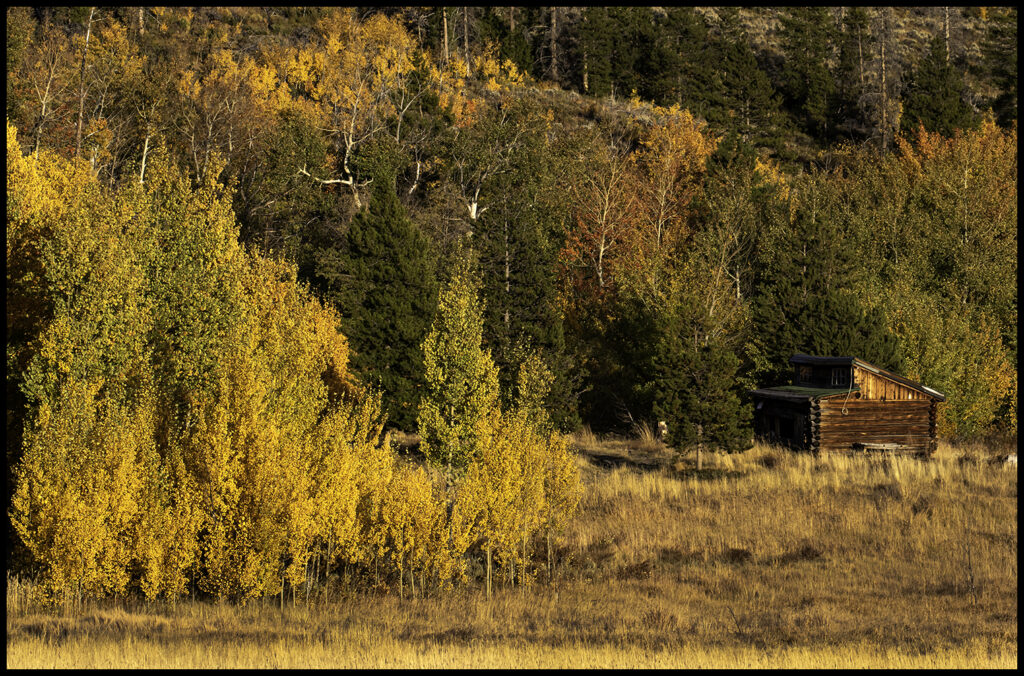
Our favorite Stillwater Pass campsite. Sadly, after the fires, this old building is gone.
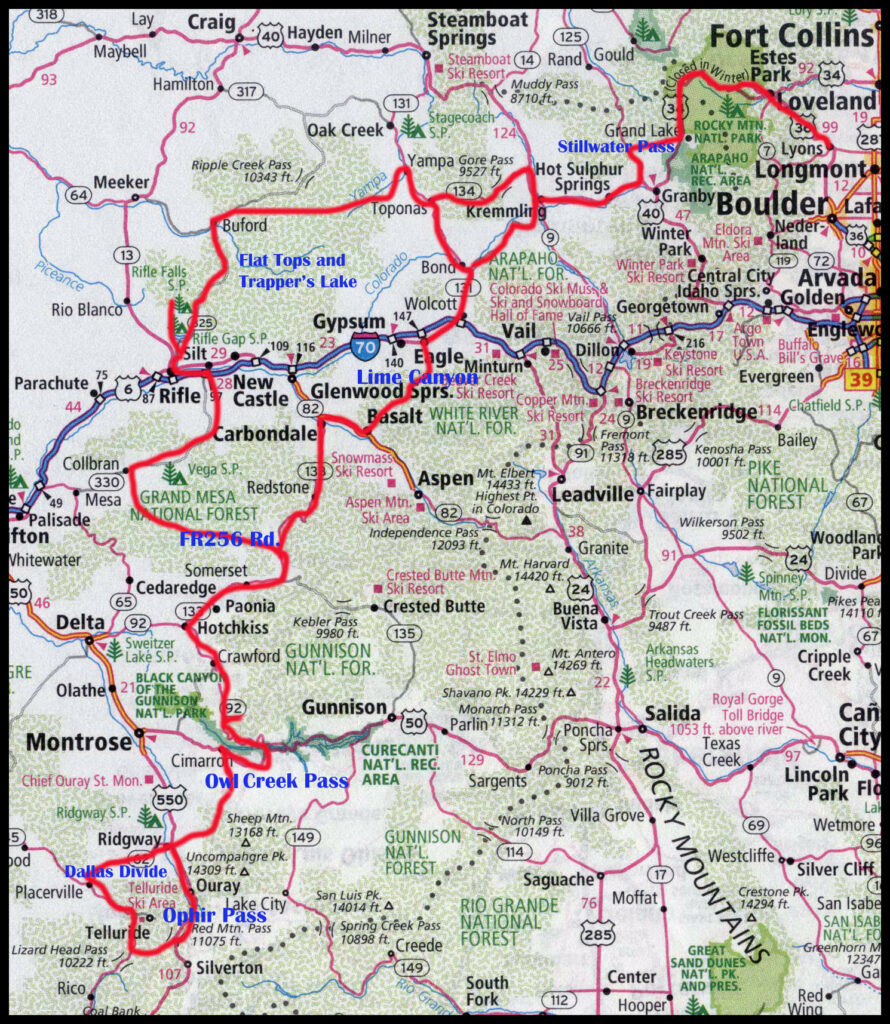
Leafing routes mentioned in this blog.
On to Kremmling and west along the Colorado River whose headwaters are in Rocky Mtn. Park. The road is mostly unpaved but very good. On Hwy. 131, take a right to Yampa, one of several entrances to the Flat Tops Wilderness area. The road from Yampa to Buford, stopping at Trappers Lake along the way, is one of our favorites.
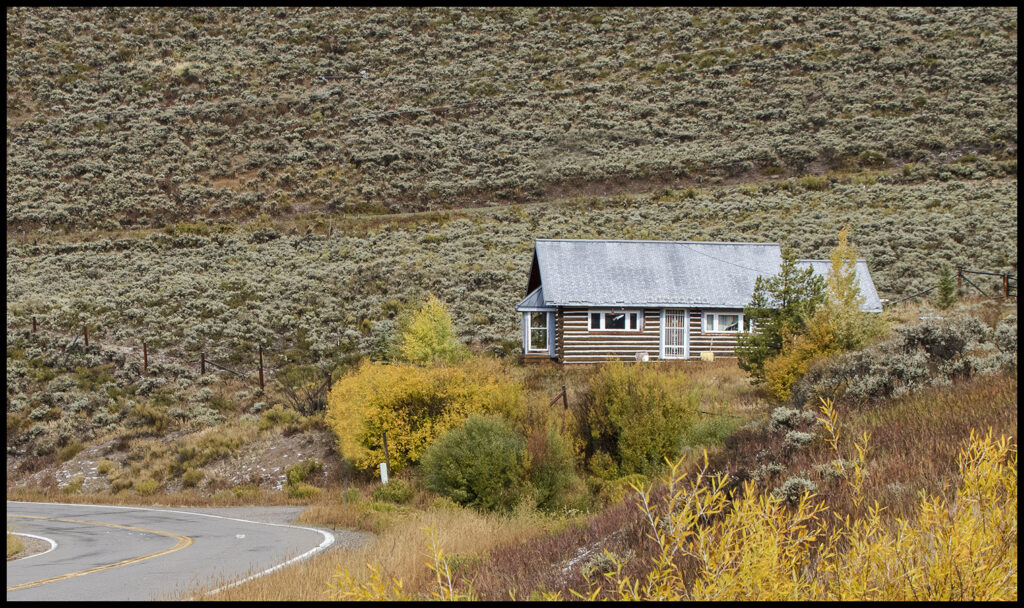
Old cabin along the Colorado River cut-off to State Bridge.
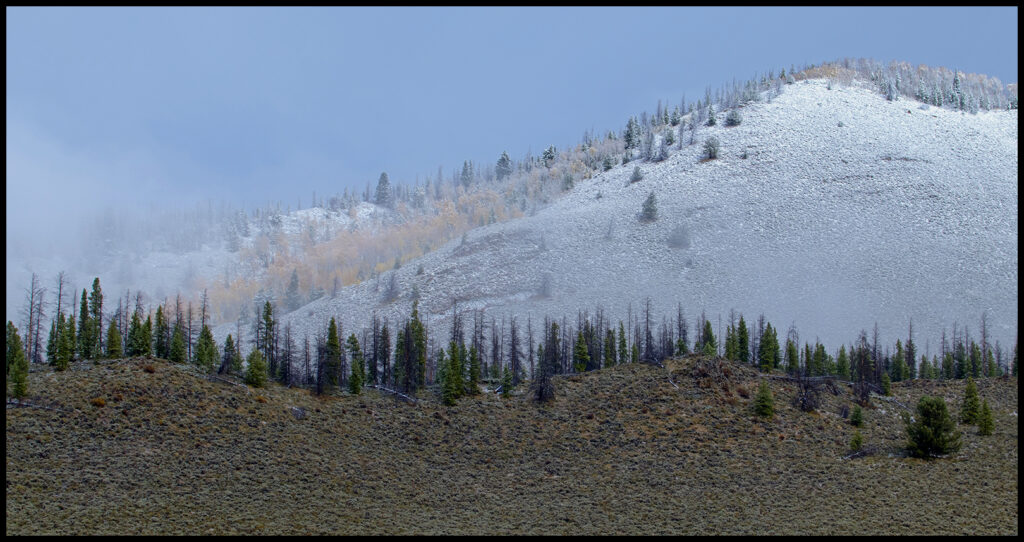
Some years the snows come early, but the sun soon melts it.
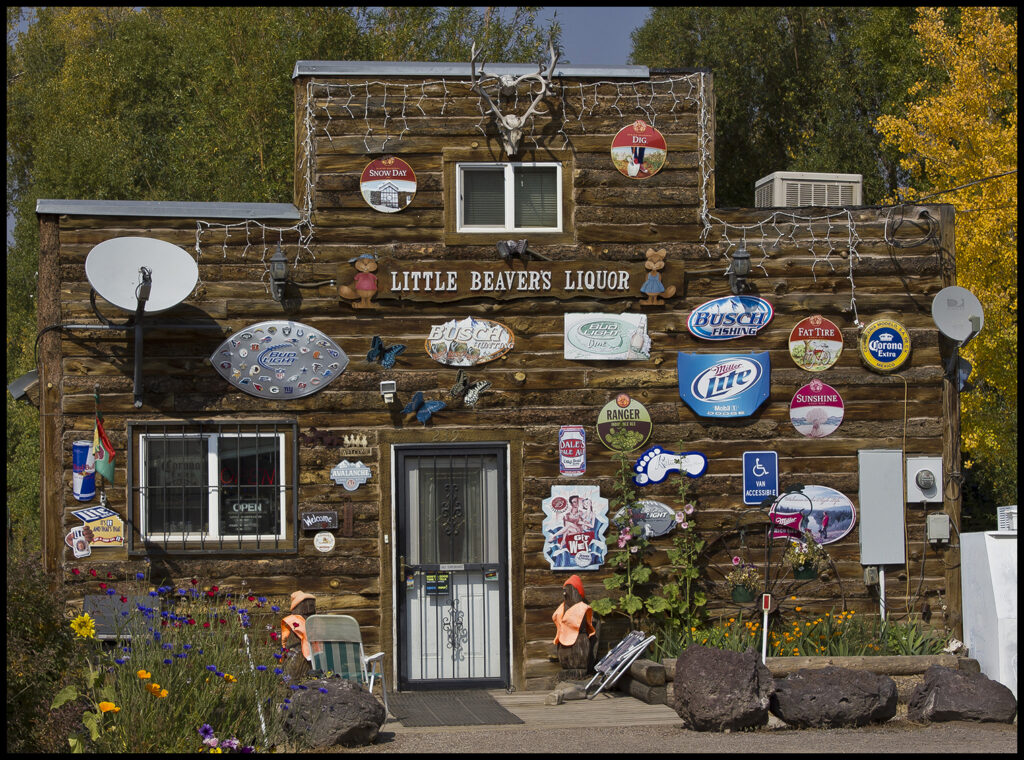
Yampa liquor, etc. store
Yampa is named after the yampa plants discovered in the area by the early hunters. Native Americans knew yampa root as a good source of protein. It’s a member of the parsley family.
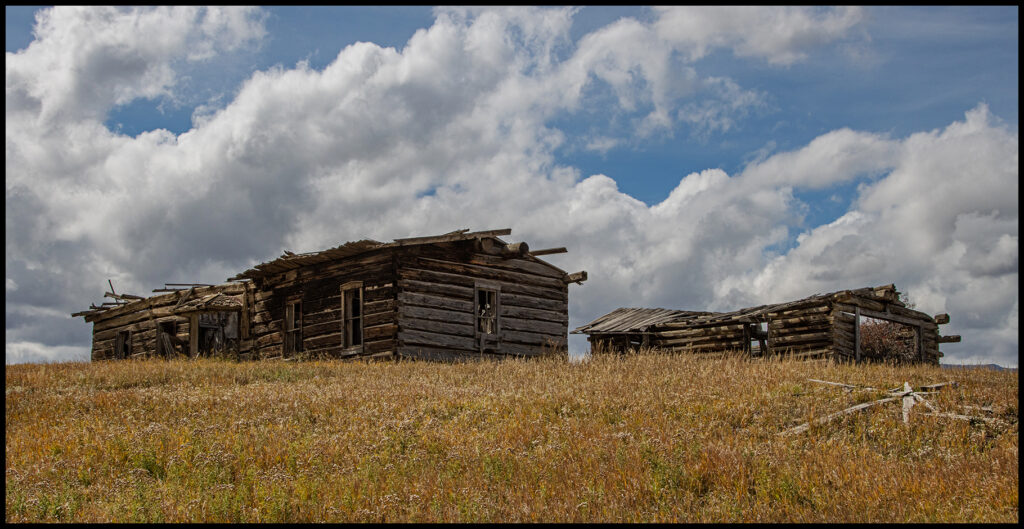
Ruin near Yampa
First a hunting camp, then a logging town, it’s now a ranching community. The main crop is hay for the cows and sheep.
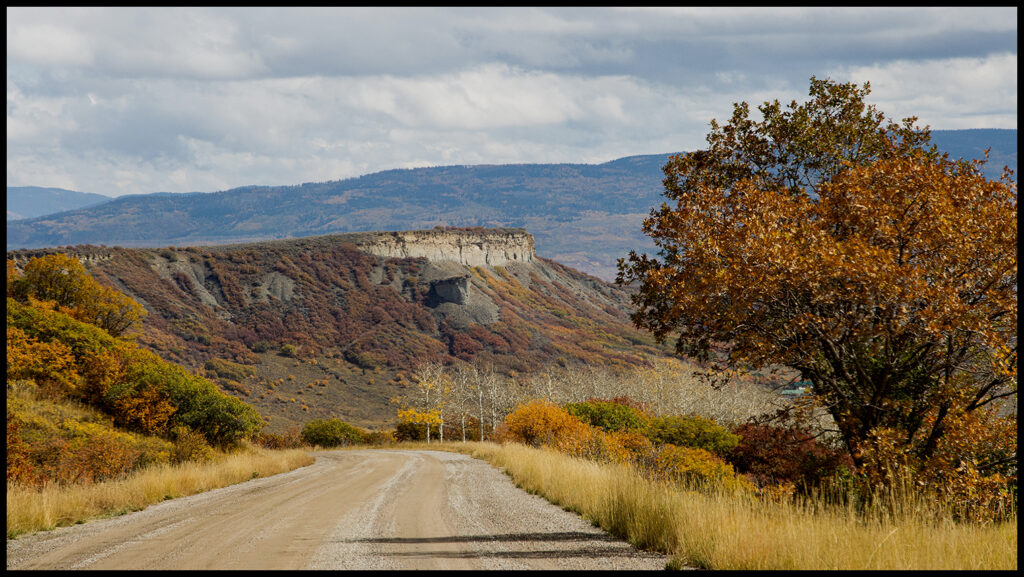
Road out of Yampa.
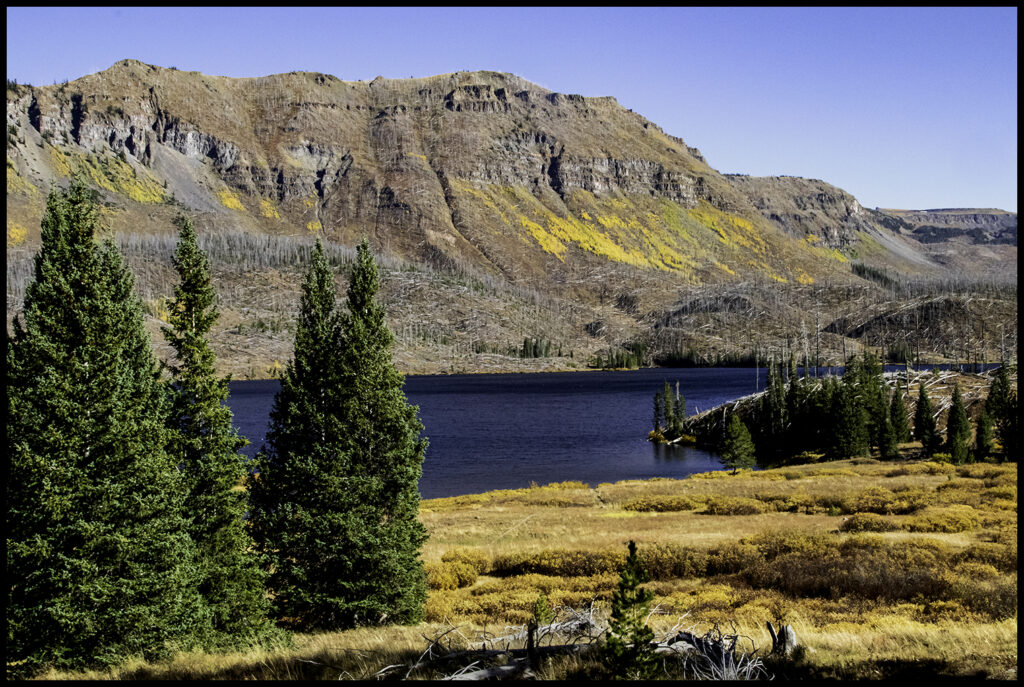
Trappers Lake, at 9600’ above sea level, is the second-largest natural lake in CO after Grand Lake. Here it is on a sunny day.

And here’s what it looked like this year. In autumn the weather is unpredictable.
There was a big fire in 2002, and the area is recovering very slowly. We stay down the road at the Himes Peak campground as there are nice trails from there, and it’s not as popular at the ones near the lake. The valley on the way in to the lake is stunning.
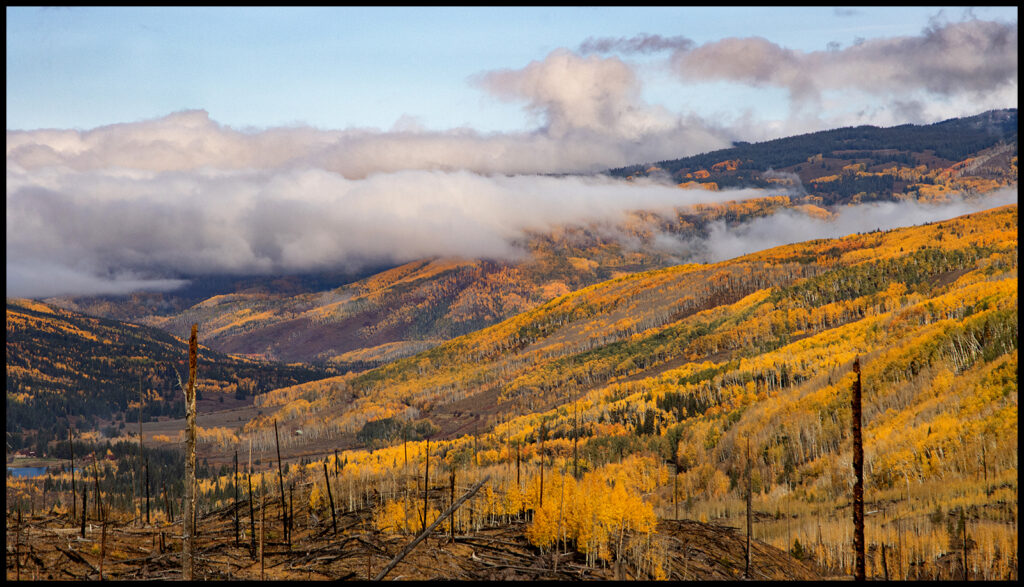
Leaving Trappers lake.
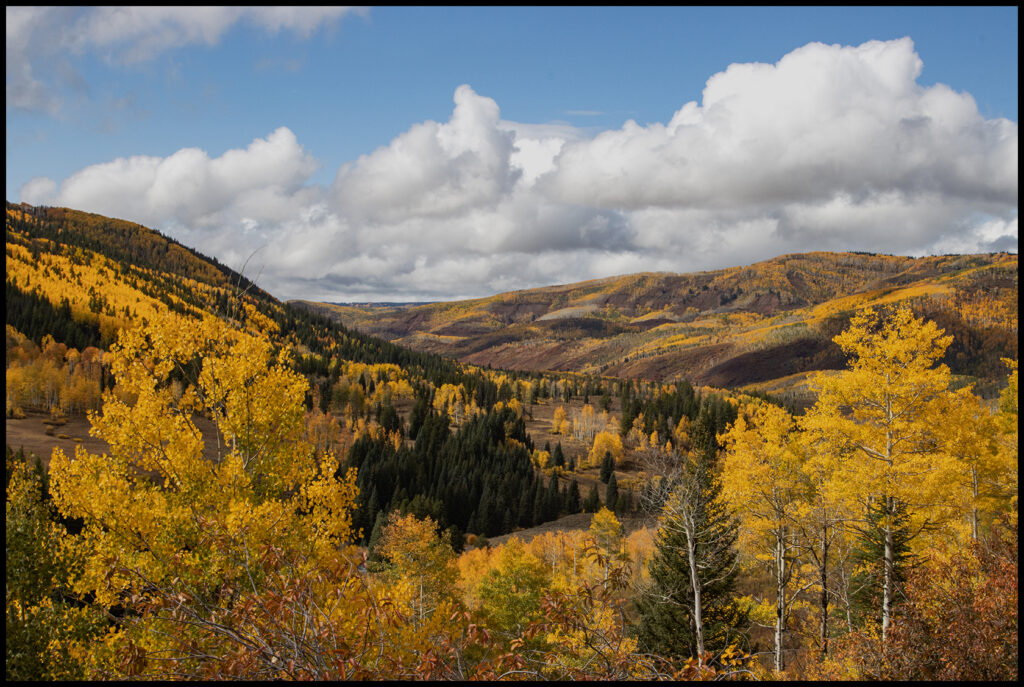
Trappers lake road view.
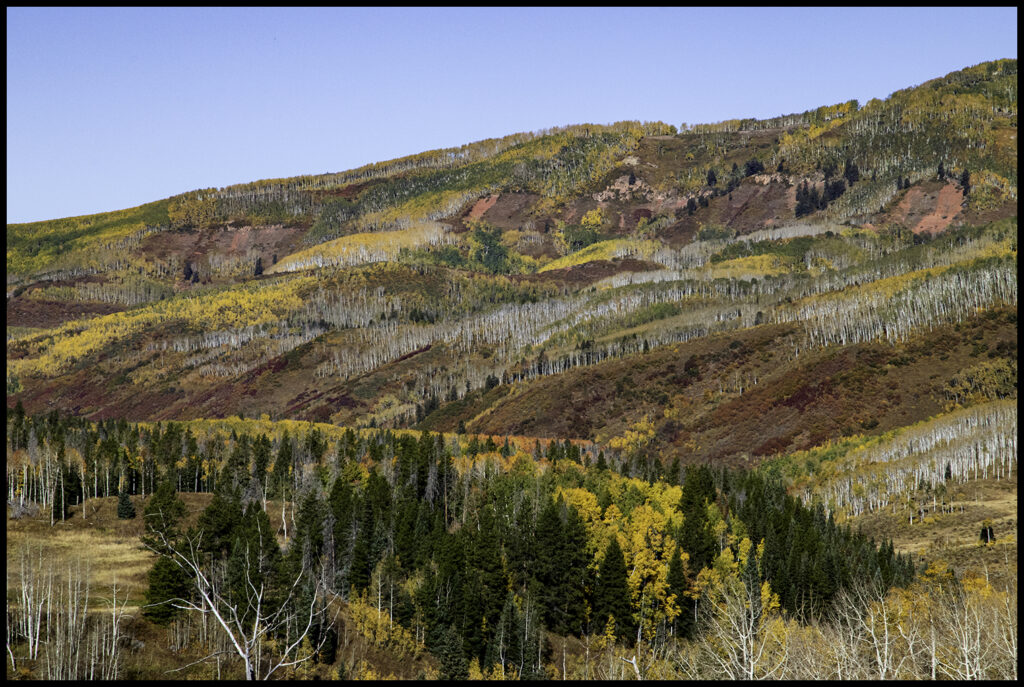
The colors are hard to beat.
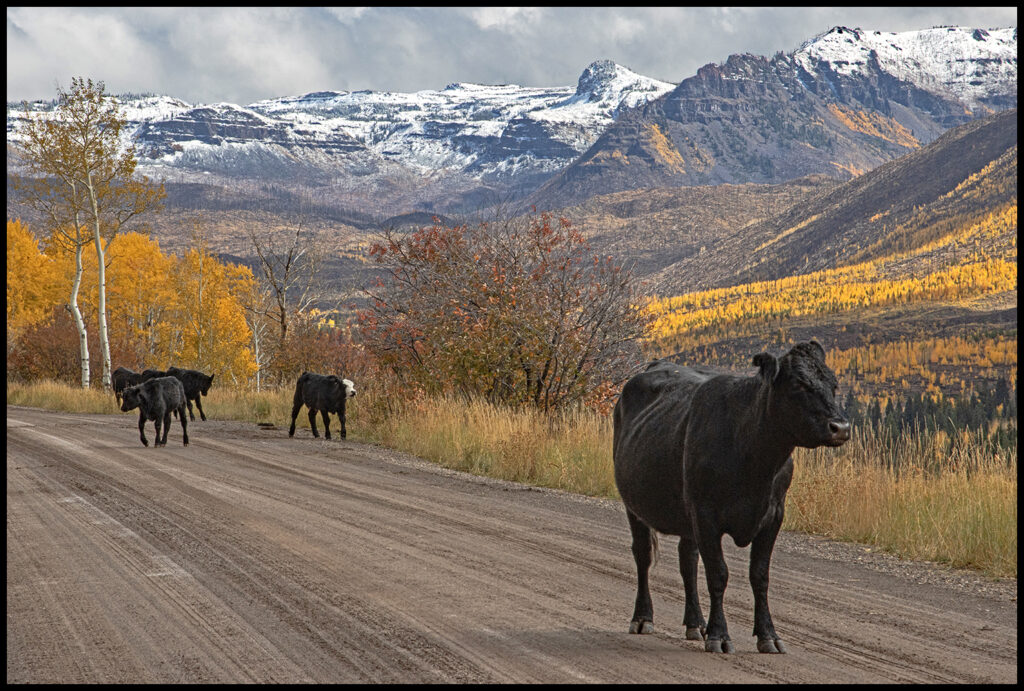
Road hazards.
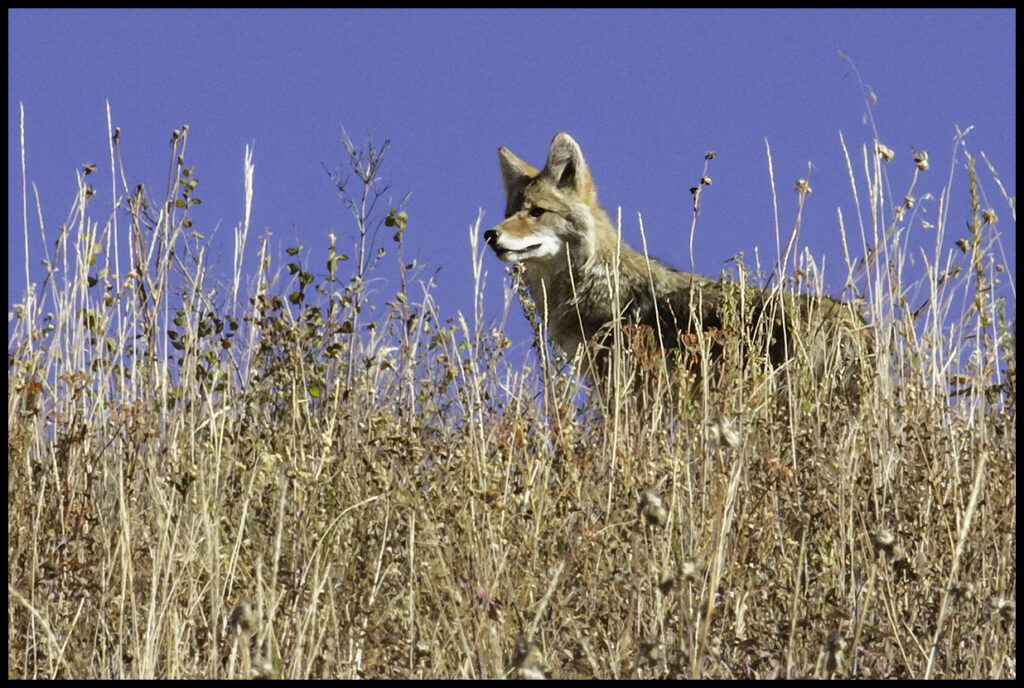
…and maybe some wildlife.
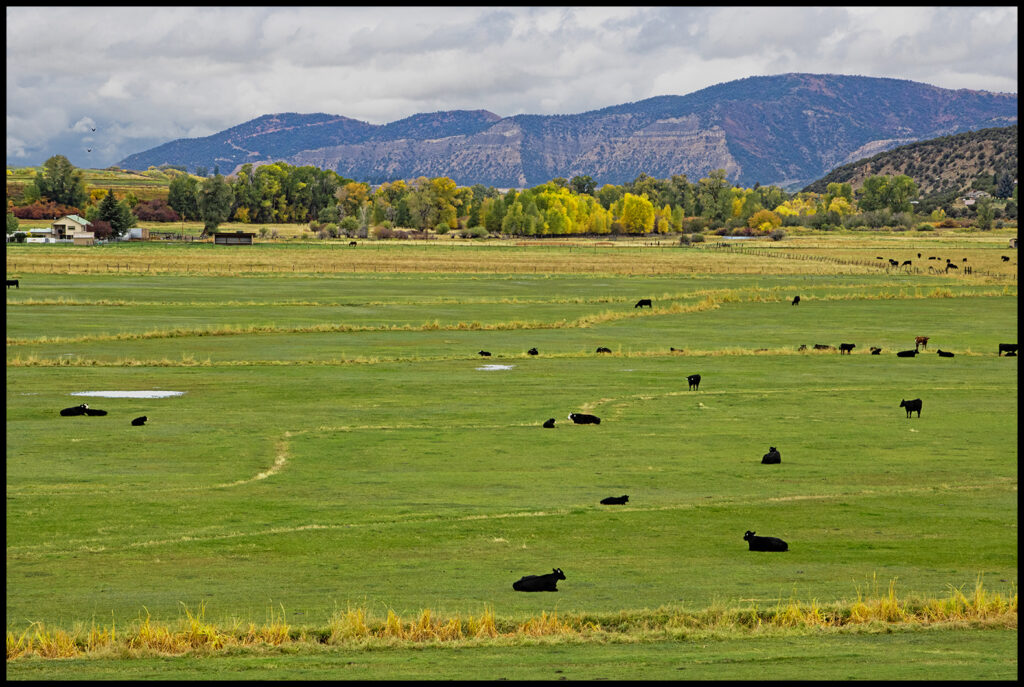
Nearing the western end you’ll find more bucolic views.
From Buford to Silt we took a detour to look at Rifle Falls State Park. On the DeLorme map it looked like a road from the park made a small loop back to the Buford/Silt Road. Wrong. That road is impassable now for anything but the sturdiest off-road vehicle. What we didn’t know is that park is a mecca for rock climbers. We passed through a gap in the rocks to find a secluded campsite for the night, then backtracked.
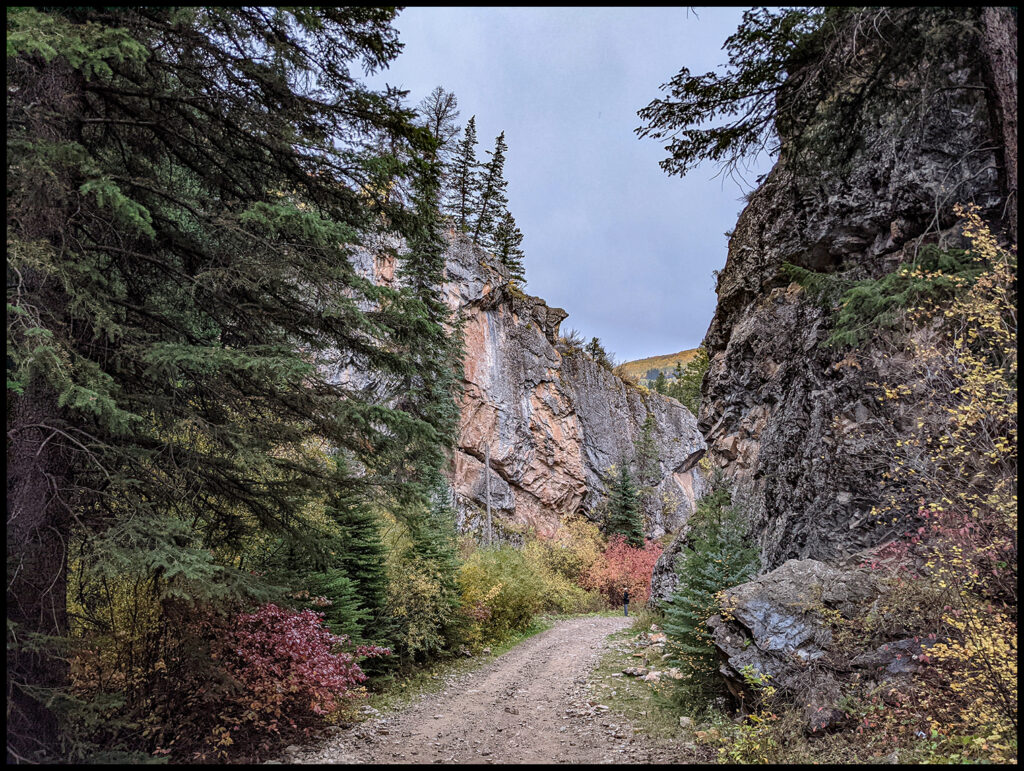
Steep canyon walls of Rifle Falls park.
On I70 go east to Silt then south to Colbran. Before reaching Colbran find the Forest Road 256 to Hwy.133 at the bottom of McClure Pass. So far this is our all-time favorite drive and virtually no one takes it. It’s well-maintained dirt all the way.
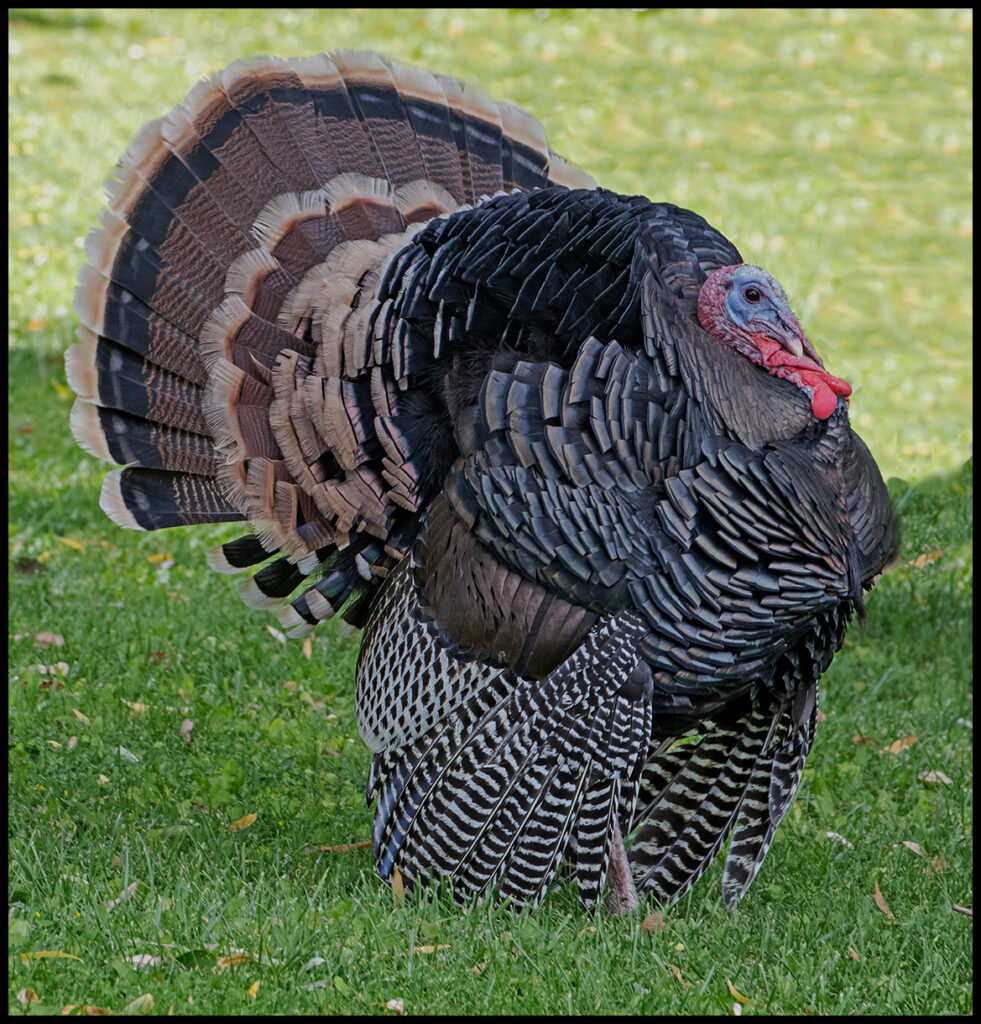
Beside the Colbran road we saw this fat fellow and a number of other males strutting their stuff.
Shortly after Buzzard Pass we found a campsite. There is a gate, but it says only that you need to close it. There are several trails out from this camp area.

The campsite.
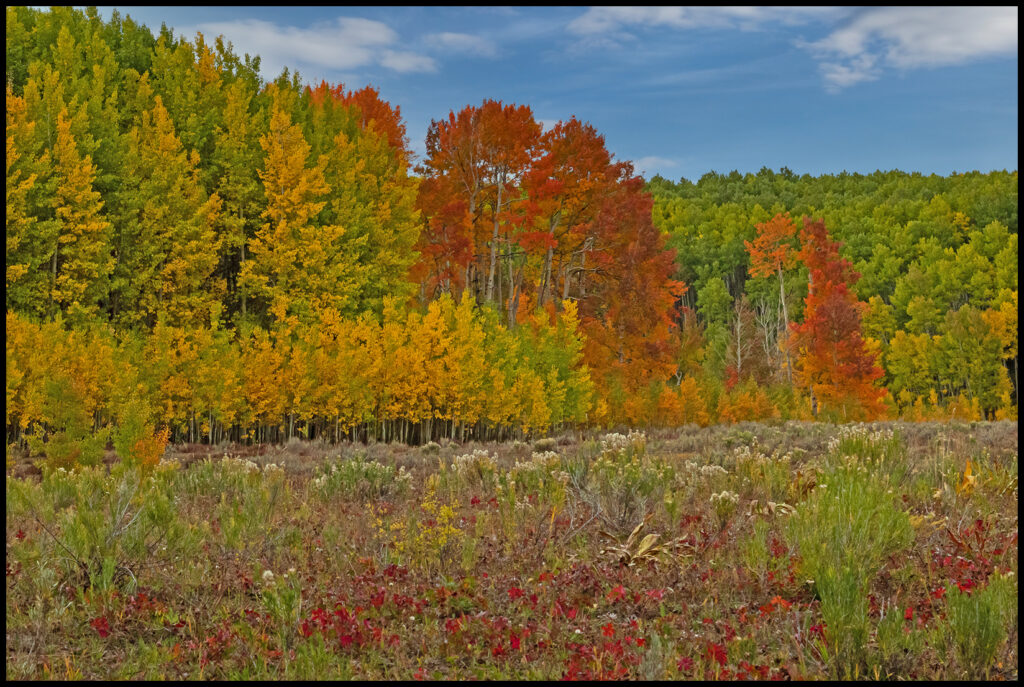
Breakfast view.
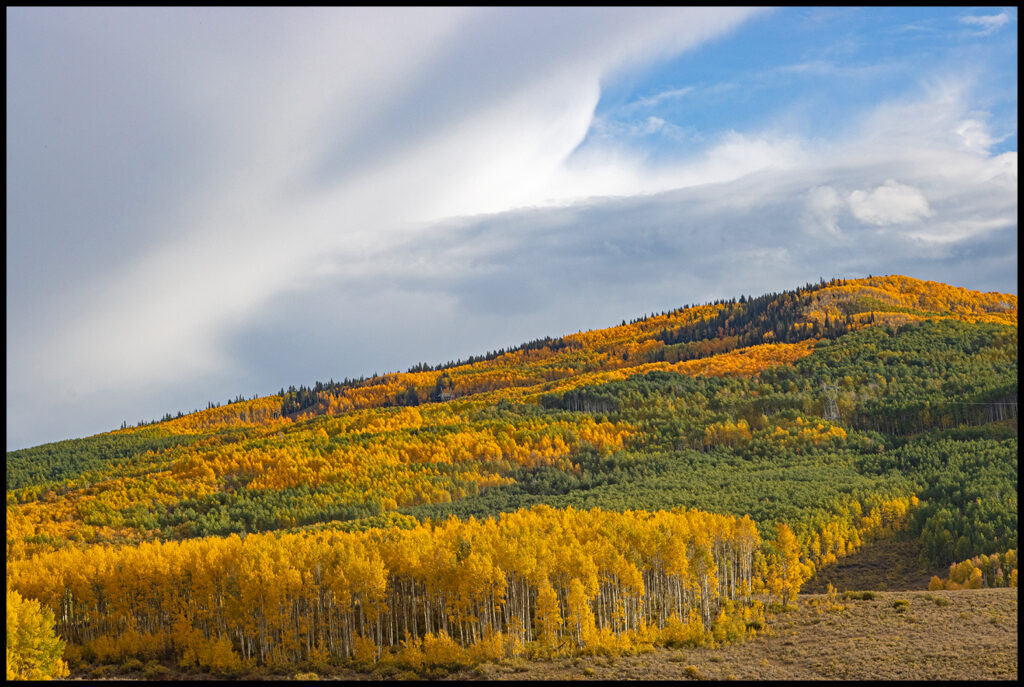
Across the road view.
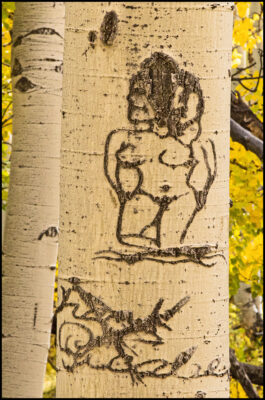
Redneck trail art
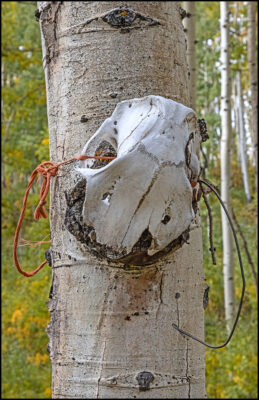
Campsite art.

This year’s trail view with storm threatening.
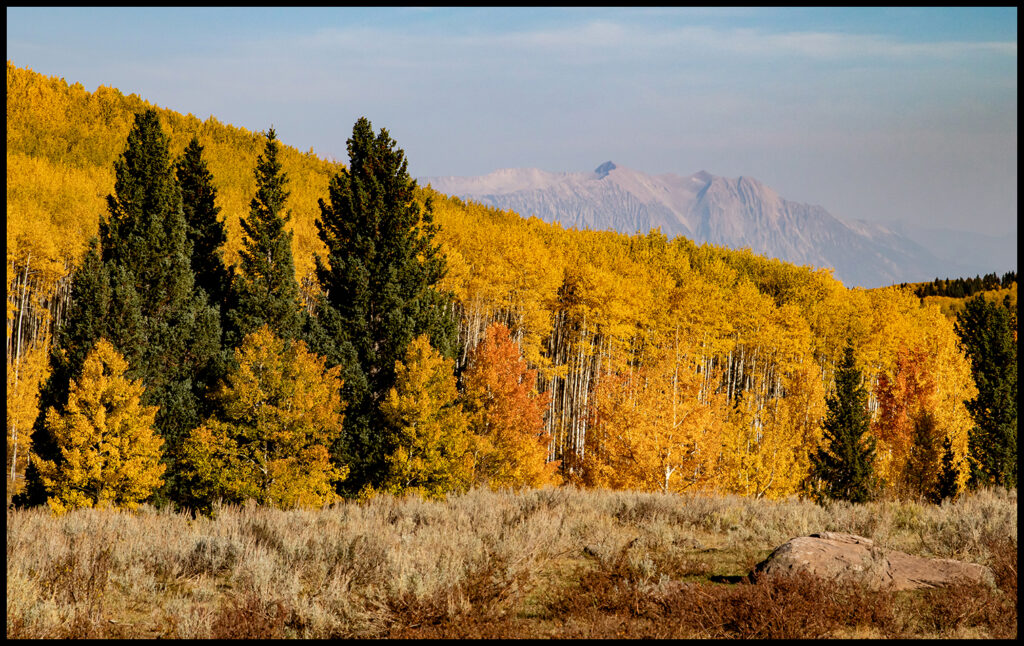
Last year’s view with smoke filled skies.
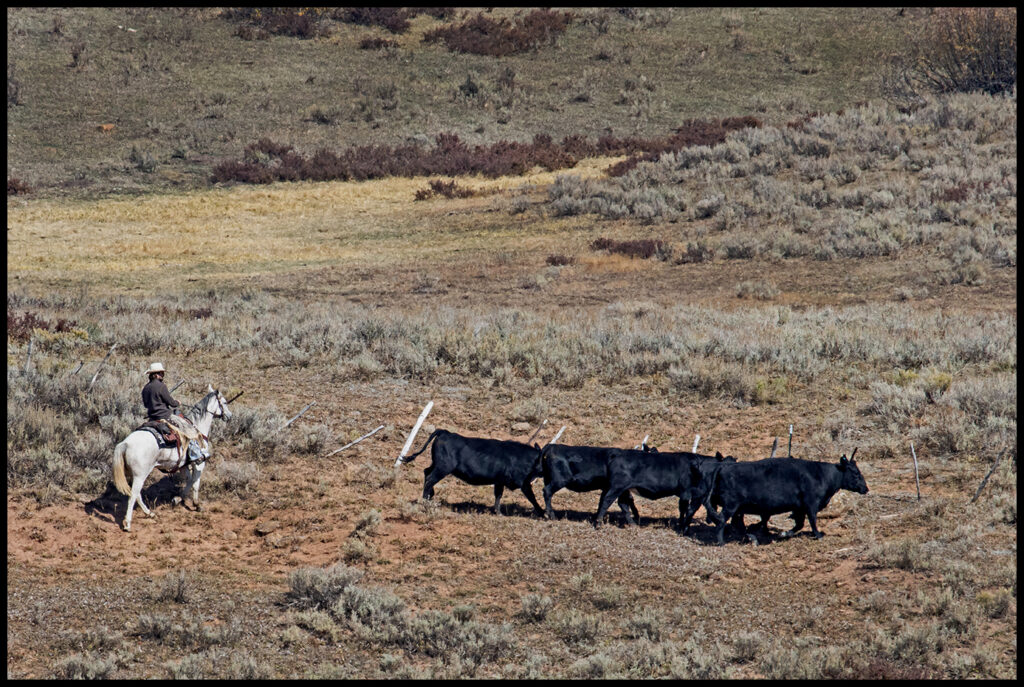
In the fall months, cowboys are busy finding and relocating their herds for winter.
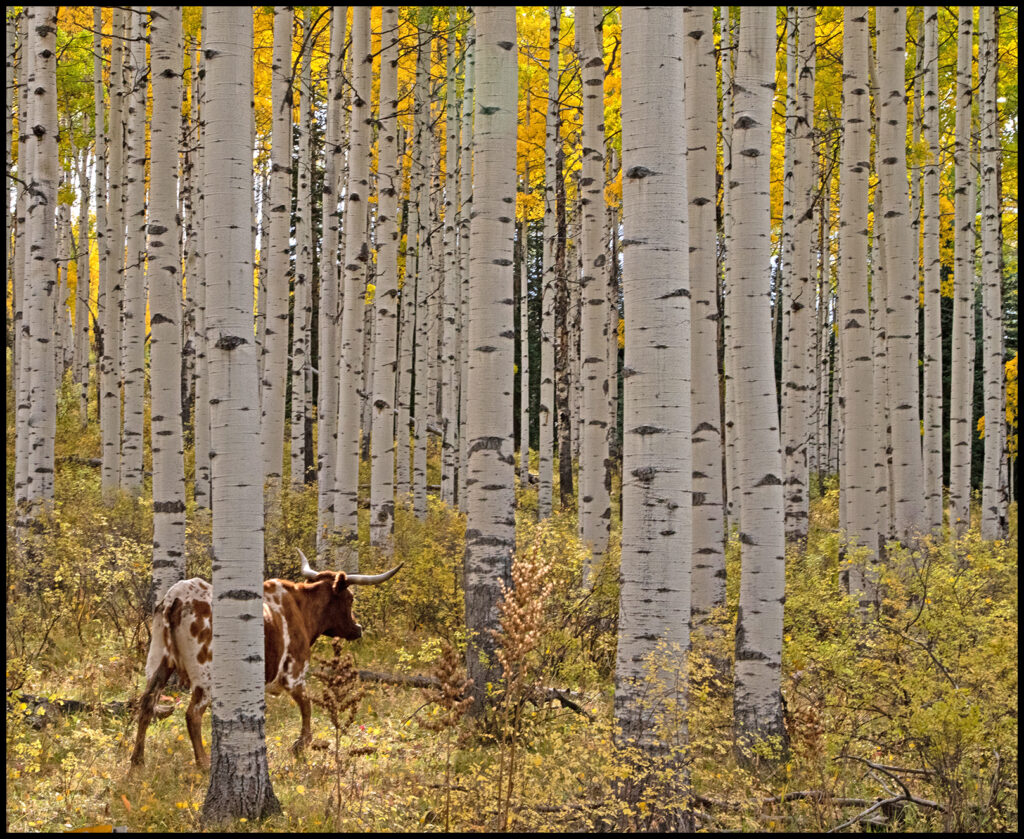
Back on the road, we find a wary one that hasn’t been found yet.
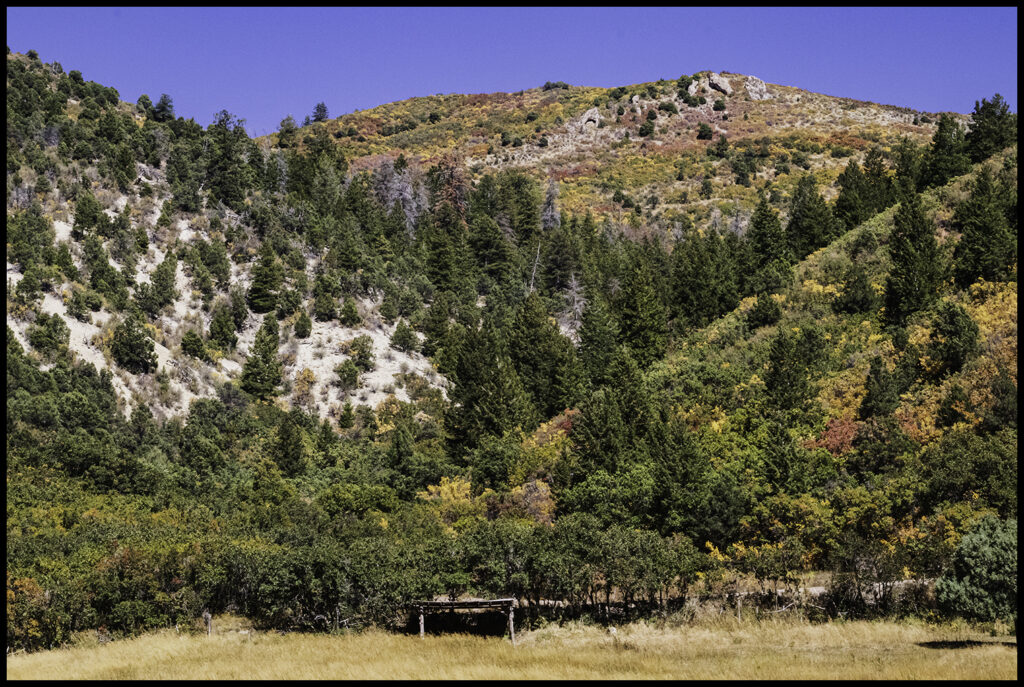
Ranch Along FR 256, heading to the Highway.
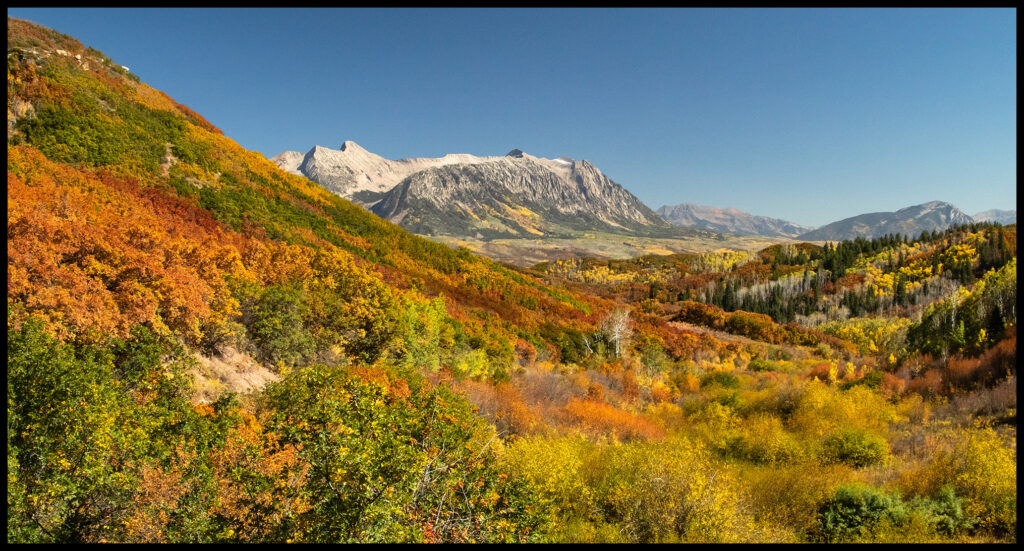
The year we found this road the skies were clear and the foliage spectacular.
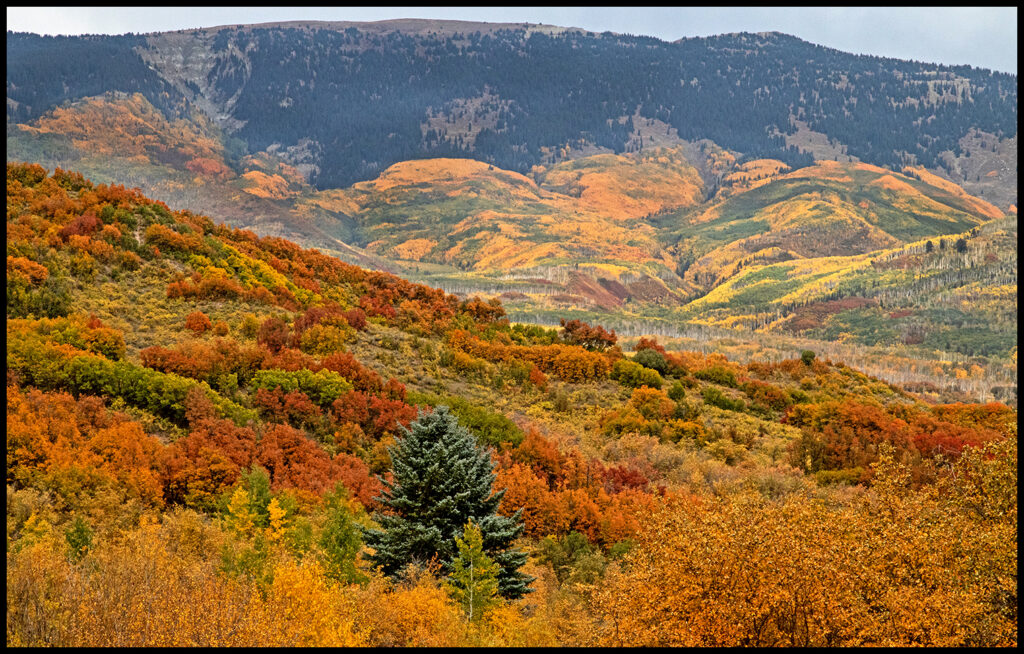
Near the junction with Hwy. 133. Unfortunately, oil men have moved into this area and are busy drilling wells. Their big rigs ruin the roads and kick up dust.
I think I’ll end this segment now and add another later. If you only have a week, this makes a nice loop. From McClure Pass to Carbondale is a scenic drive along the Crystal River. There are giant marble chunks in the river from the days when marble was shipped from the mines of Marble by wagon. Some of them slipped off the road or tipped over, dumping the marble into the river. (Take a short detour to the town if you have time). The town was incorporated in 1899 and the marble mined there is considered of the highest quality, rivaling that from Italy and Greece. Some of the Lincoln Memorial in D.C. was built with Colorado marble.
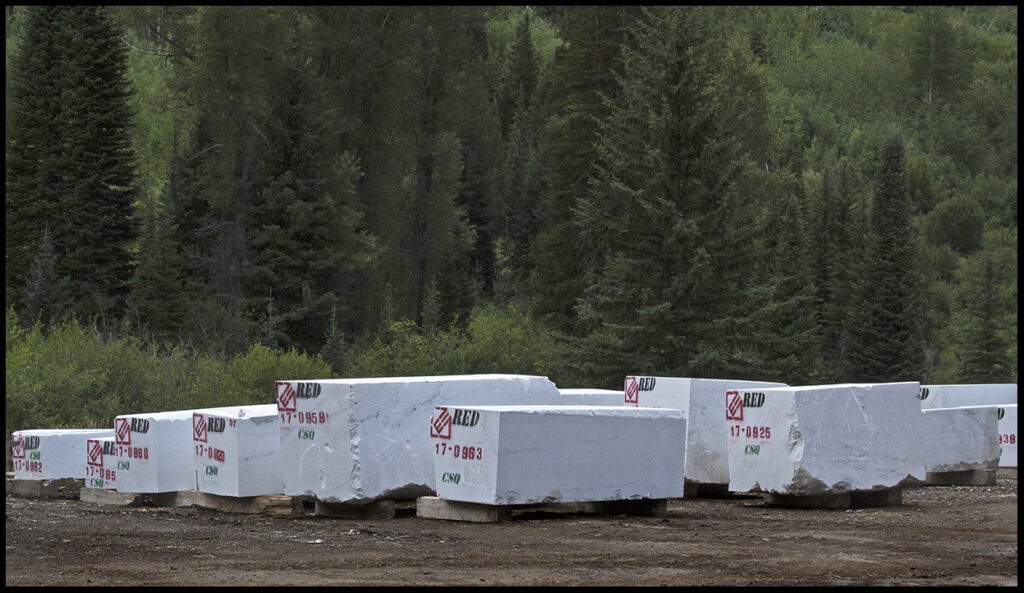
Marble blocks ready for shipment.
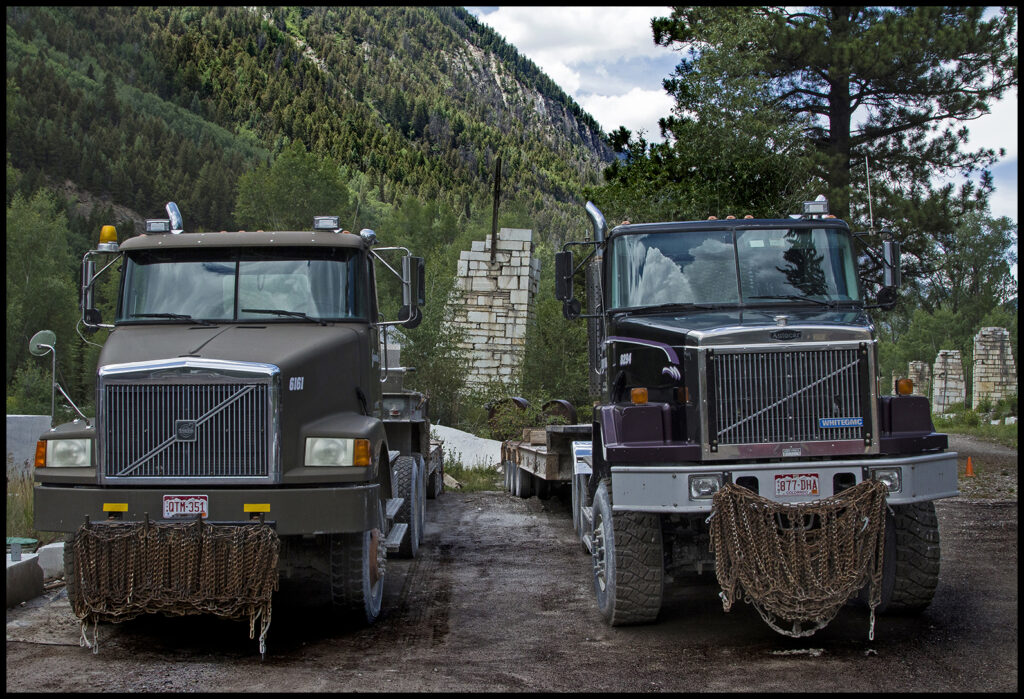
Modern haulers, no more horse and wagon transport.
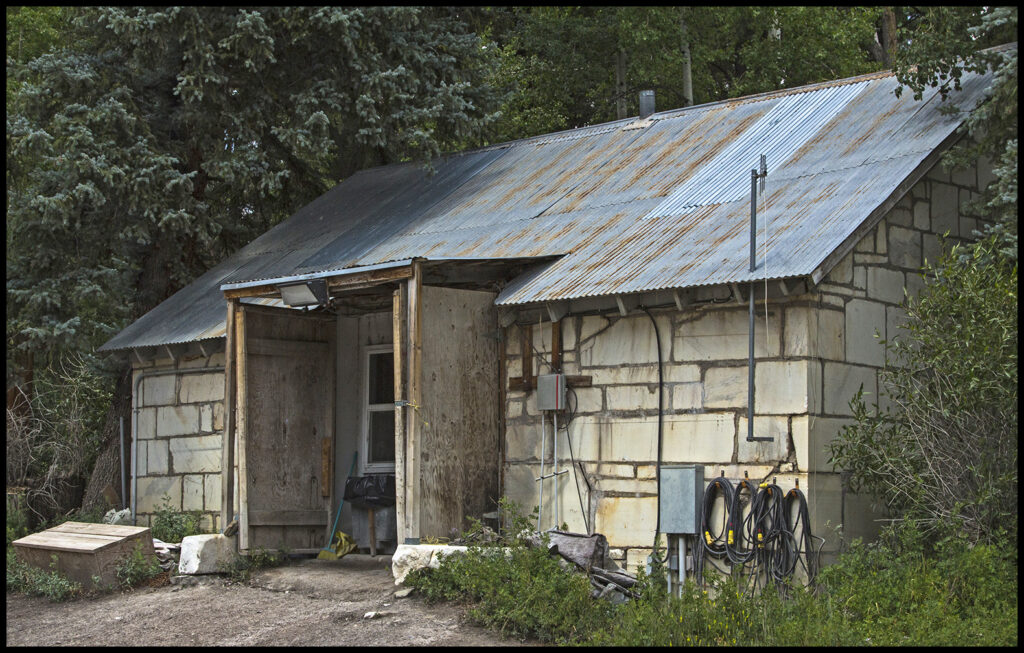
Old building made of marble.
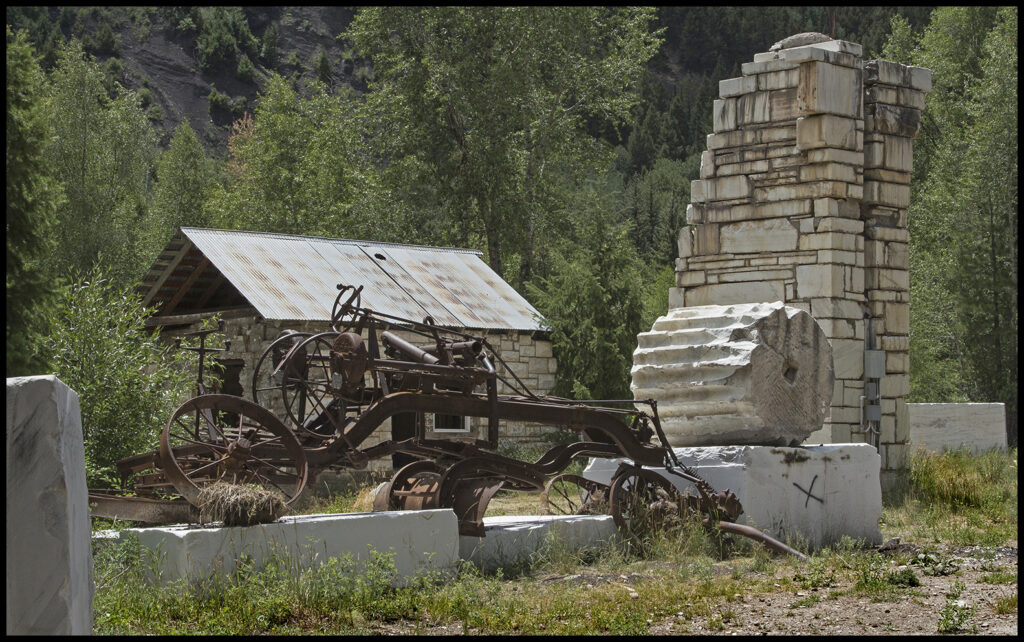
Memorabilia
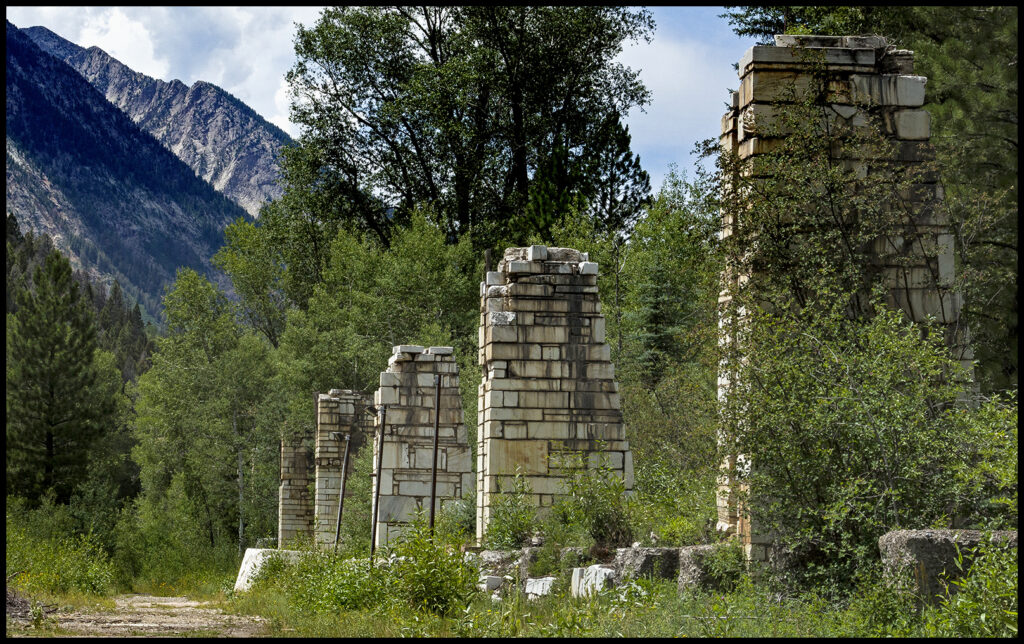
??
